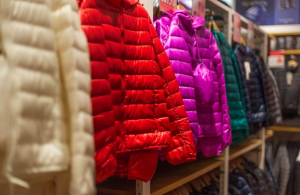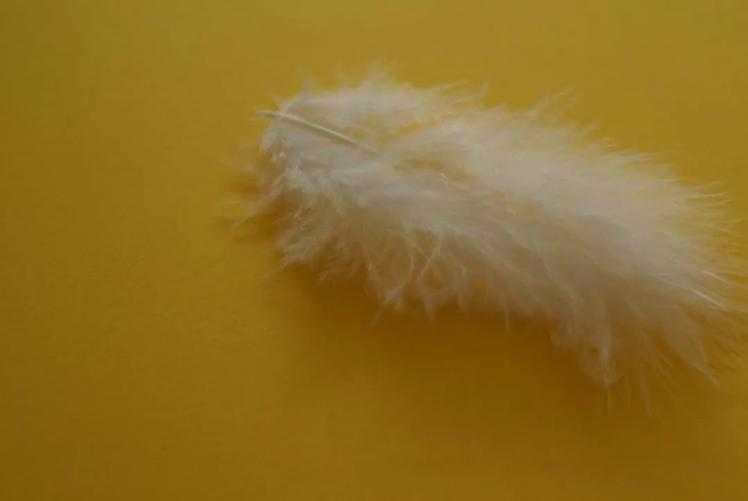The weather is getting colder and colder, and it’s time to wear down jackets again. However, the prices and styles of down jackets on the market are all dazzling.
What kind of down jacket is really warm? How can I buy a cheap and high-quality down jacket?

Image Source:Pixabay
One keyword to understand the new national standard for down jackets
At the beginning of last year, my country released the GB/T14272-2021 "Down Clothing" standard (hereinafter referred to as the "new national standard") and it will be officially implemented on April 1, 2022. Among them, the biggest highlight of the new national standard is the change of "down content" to "down content".
What is the difference between "down content" and "down content"? What does this modification mean?
Down: A general term for down, immature down, similar down and damaged down. It is in the shape of a small dandelion umbrella and is relatively fluffy. It is the best part of a down.
Velvet: The single filaments that fall off the velvet are in the shape of individual filaments and have no fluffy feel.
| old national standard | Velvet content | Velvet + velvet waste | 50% is qualified |
| new national standard | Down content | Pure velvet | 50% is qualified |
It can be seen that although both the new national standard and the old national standard stipulate that "50% of the stated amount is qualified", the change from "down content" to "down content" will undoubtedly impose stricter quality requirements on filled down, and will also The standard for down jackets has been raised.
In the past, the "down content" required by the old national standard contained both velvet and velvet. This gave some unscrupulous businesses an opportunity to fill down jackets with a lot of velvet waste and include it in the down jacket. The amount of cashmere is medium. On the surface, the label says "90% down content" and the price is very high. However, when you buy it back, you will find that the so-called high-quality down jacket is not warm at all.
Because from a scientific point of view, it is "down" that actually plays the role of warmth in down jackets. The biggest difference in the implementation of the new national standard is that the velvet waste that has no warmth retention effect is no longer included in the down content, but only the down content. Down jackets are qualified only if the down content exceeds 50%.。
How to choose the right down jacket?
There are three factors that affect the warmth of a down jacket: down content, down filling, and bulkiness.
The down content has been explained clearly, and the next step is the filling amount, which is the total weight of all the down filled in a down jacket.
When purchasing down jackets, you need to be careful not to confuse the "down content" and "down filling" in the old national standard. "Down content (old)" is measured in percentage, while down filling is measured in weight, that is, grams.
It should be noted that neither the old national standard nor the new national standard stipulates the minimum standard for down filling.
This also brings about a problem when purchasing - many down jackets, if you just look at the "down content", they seem to be quite high, even 90%, but because the down content is too low, they are not actually frost-resistant.
If you really don’t know how to choose the amount of down filling, you can refer to the recommended standards by Zhu Wei, director of the Information Department of the China Down Industry Association:
“Generally, the filling amount of light down jackets chosen in early winter is 40~90 grams; the filling amount of short down jackets of ordinary thickness is about 130 grams; the filling amount of medium thickness is about 180 grams; the down filling amount of down jackets suitable for outdoor wear in the north should be between 180 grams and above”。
Finally, there is fill power, which is defined as the ability to store air volume per unit of down. In layman's terms, the more air the down stores, the better its thermal insulation properties are.
At present, down jacket labels in my country do not need to express fill power. However, according to American standards, as long as the fill power is >800, it can be recognized as high-quality down.

A brief summary is:
1. Check whether the implementation standard on the down jacket certificate is the new national standard GB/T 14272-2021;
2. Look at the velvet content. The higher the velvet content, the better, with a maximum of 95%;
3. Look at the down filling amount. The larger the down filling amount, the warmer it will be (but if the down filling amount is too large, it may be too heavy to wear);
4. If there is any, you can check the bulkiness. A fill power greater than 800 is high-quality down, and the current highest is 1,000.
When purchasing down jackets, avoid these misunderstandings
1 Is goose down better at keeping warm than duck down? ——NO!
This statement is too absolute.
The longer the growth cycle of ducks and geese, the higher the maturity of their down and the stronger its warmth retention properties. In the case of the same species, the higher the maturity of the birds, the better the down quality; in the case of the same maturity, the quality of goose down is mostly better than that of duck down, but it is worth mentioning that the down of older ducks is better. It will be better than the down of young geese.
In addition, there is a kind of high-quality down that has better warmth retention, is rarer and more expensive - eiderdown.
It is known that eider down has a fill power of 700, but its thermal insulation effect is comparable to that of down with a fill power of 1000. The data given on the official website of DOWN MARK (a globally recognized quality mark issued by the Canadian Down Association) shows that the highest value of fill power since the test was 1,000.
2 Is the quality of white velvet higher than that of gray velvet? ——NO!
White Down: Down produced by white waterfowl · Gray Down: Down produced by variegated waterfowl
The reason why white velvet is more expensive than gray velvet is mainly expensive for two reasons, one is the smell, and the other is the adaptability of the fabric.
Generally speaking, the smell of gray duck down is heavier than that of white duck down, but down needs to go through strict processing and washing and disinfection procedures before filling. The old national standard requires that the smaller the odor level, the better (divided into 0, 1, 2, and 3 (a total of 4 levels), as long as it is ≤ level 2, you can pass the standard. So there is no need to worry at this point. Basically, as long as the down jacket can pass the smell, it will not have any smell, unless it is an extremely low-quality down jacket.
Moreover, in the new national standard, the assessment of odor standards has been directly changed to "pass/fail", and the method of using odor to distinguish the quality of down is no longer applicable.
As for fabric adaptability, that’s better understood.
Because white velvet is light in color, there is no limit to the color of clothes that can be filled. However, because gray velvet is dark in color, there is a risk of color show-through when filling light-colored clothes. Generally, it is more suitable for dark fabrics. White velvet is more expensive than gray velvet not because of its quality and warmth retention function, but purely because of the color matching and "possible smell."
Moreover, the new national standard down categories stipulate that only goose down and duck down are divided into gray down and white down, which means that "white" and "grey" will no longer be marked on clothing labels.
How to maintain your down jacket to keep it warm?
1 Reduce the frequency of cleaning and use neutral laundry detergent
Many friends may find that down jackets become less warm after being washed once, so wash down jackets as little as possible. If the area is dirty, you can use neutral laundry detergent and wipe it off with a hot towel.

2 Avoid exposure to the sun
Protein fibers are most taboo against exposure to the sun. In order to avoid aging of the fabric and down, just put the washed down jacket in a ventilated place to dry.
3 Not suitable for squeezing
When storing down jackets, do not fold them to avoid squeezing the down jackets into balls. It is best to hang the down jackets for storage.
4 Moisture-proof and mildew-proof
When storing down jackets during the change of seasons, it is best to put a breathable bag on the outside of the down jacket, and then place it in a ventilated and dry place. Be sure to check it on rainy days to prevent it from getting damp. If you find mildew spots on your down jacket due to moisture, you can wipe it with a cotton ball dipped in alcohol, then wipe it clean with a clean wet towel and put it away to dry.
It is worth mentioning that in the past, there was a risk of explosion when washing down jackets in a washing machine, but the new national standard stipulates that "all down jackets must be suitable for washing, and it is especially recommended to use a drum washing machine."
I wish everyone can buy a down jacket that looks good and is easy to wear~
Post time: Dec-09-2023





